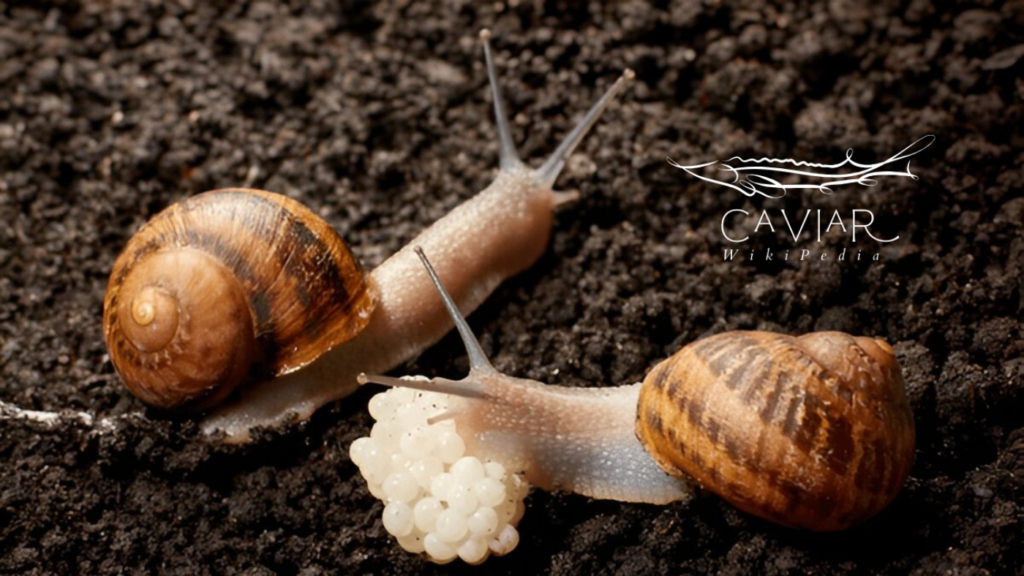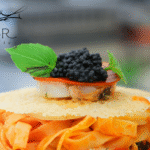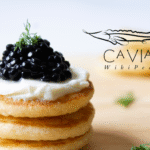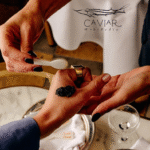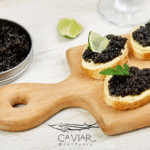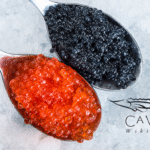Have you ever heard of snail caviar? It’s not something you see every day. Most people think of fish eggs when they hear “caviar.” But snail caviar is different.
It’s a rare and fancy food that’s becoming popular with food lovers. Let’s dive into what makes snail caviar special, why it’s called a luxury delicacy, and how it’s changing the food world.
What Is Snail Caviar?
Snail caviar is the eggs of land snails. These tiny eggs look like little white pearls. They come from snails like the Petit Gris or Helix Aspersa Maxima. Unlike fish caviar, which comes from the sea, snail caviar is from the land.
The eggs are small, about 3 to 6 millimeters wide. They’re cleaned and salted to make them tasty. People call it “escargot pearls” or “white caviar” because of how they look.
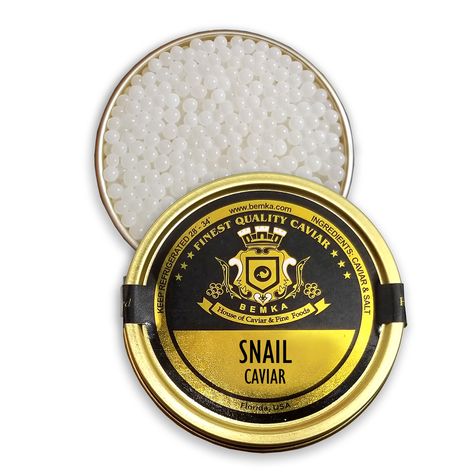
The taste is unique. It’s not salty or fishy like fish caviar. Instead, it’s earthy and mild. Some say it tastes like mushrooms or a walk in the forest after rain.
Others notice hints of herbs or carrots. The texture is fun too—it’s a bit crunchy and pops in your mouth. That’s why chefs and food fans love it.
How Is Snail Caviar Made?
Making snail caviar is not easy. It takes time and care. Snails don’t lay many eggs. One snail might only give 50 to 100 eggs a year. That’s just a few grams! Farmers raise snails in special places. They control the light, heat, and wetness to help the snails lay eggs. Then, they collect the eggs by hand. It’s slow work.
After collecting, the eggs are washed. Some are soaked in salt water, like fish caviar. Others are kept fresh or stored in oil. This keeps the flavor good. Because it’s so hard to make, snail caviar is rare. And when something is rare, it gets expensive.
Snail Caviar Price: Why So High?
Let’s talk about snail caviar price. It’s not cheap! A small jar, about 50 grams, can cost $70 or more. Sometimes, it’s over $150. Why is it so pricey? First, snails don’t make a lot of eggs.
Compare that to fish, where one sturgeon can lay thousands of eggs. With snails, you need many to get just a little caviar.
Second, the process takes a lot of work. Farmers spend weeks raising snails. Then, they pick each egg carefully. It’s all done by hand. That adds to the cost. Finally, snail caviar is a luxury food. People pay more for things that are special and hard to find.
In some places, it costs as much as $1,500 per kilogram. That’s close to the price of top fish caviar, like Beluga!
Where Did Snail Caviar Come From?
Snail caviar started in Europe. France was one of the first places to try it. People there already loved escargot, which is cooked snails.
So, using snail eggs made sense. Farmers in Austria, Poland, and Spain joined in too. Now, it’s spreading. Even the United States has snail farms, like Peconic Escargot in New York.
Long ago, snail eggs were a treat in ancient times. Some called them “pearls of Aphrodite” because they thought they made people feel romantic. Today, it’s a modern luxury. Chefs use it to make dishes look and taste amazing.
Why Is It a Luxury Delicacy?
Snail caviar is fancy for many reasons. It’s rare, which makes it special. You won’t find it in every store. The taste is different from anything else. It’s not strong—it’s gentle and earthy. That makes it perfect for fancy meals. Plus, it looks beautiful. The white pearls shine on a plate.
It’s also a “no-kill” food. Unlike fish caviar, where fish are often harmed, snails keep living after laying eggs. This makes it a choice for people who care about nature. All these things—rarity, taste, looks, and kindness—make snail caviar a luxury delicacy.
How Do You Eat Snail Caviar?
Wondering how to try snail caviar? It’s easy! You can eat it by itself with a small spoon. That way, you taste it fully. Or, put it on a cracker with butter. Some people use blinis, which are tiny pancakes. Add a bit of sour cream or crème fraîche for extra flavor.
Chefs get creative with it. They sprinkle it on salads or soups. It goes well with meat or veggies. You can even pair it with fish dishes. For drinks, champagne is a classic match. The bubbles make the caviar taste even better. A dry white wine works too. It’s all about enjoying the simple, earthy taste.
Is Snail Caviar Healthy?
Yes, snail caviar is good for you! It has protein, which helps your body grow strong. It’s also got omega-3 fats, great for your heart and brain. There are vitamins too, like A, B, and C. Plus, it has minerals like calcium and magnesium. It’s low in calories—about 90 calories in 100 grams. That’s less than many snacks. So, it’s a treat that’s good for your body.
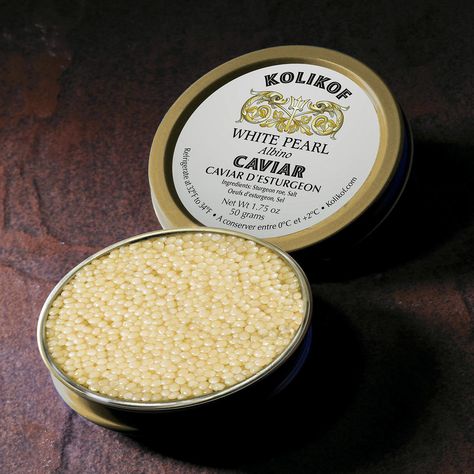
Snail Caviar Around the World
Snail caviar is growing big. In France, they call it “Caviar d’Escargot.” It’s sold in fancy jars. In Austria, farms near Vienna make it fresh.
England has snail caviar kept in olive oil. In South Africa and Ukraine, farmers sell it to restaurants. Even small farms are starting up. People everywhere are curious about this new food.
It’s not as famous as fish caviar yet. But it’s getting there. Food lovers share it on social media. Chefs show it off in dishes. The snail caviar price keeps it exclusive, but more people want to try it.
Challenges of Snail Caviar
Making snail caviar isn’t simple. Snails need the right home to lay eggs. If it’s too hot or cold, they won’t. Collecting eggs is hard work.
They’re tiny and fragile. Some break easily. Farmers lose money if they can’t get enough. Shipping it is tricky too—it has to stay cold.
The taste can be a challenge. Not everyone likes earthy flavors. Some say it’s too mild. Others love it. Farmers and chefs work hard to make people see how special it is.
The Future of Snail Caviar
What’s next for snail caviar? It’s exciting to think about. More farms might start. New ways to make it could lower the snail caviar price. That would let more people try it. Chefs will keep finding fun ways to use it. Maybe it’ll be in stores near you one day.
It’s also good for the planet. Snail farming doesn’t hurt the earth like some fishing does. As people care more about green food, snail caviar could shine. It’s a luxury that’s kind to nature.
My Thoughts on Snail Caviar
I think snail caviar is amazing. It’s not just food—it’s an adventure. The idea of eating snail eggs sounded strange at first. But the taste won me over. It’s soft and earthy, like nothing I’ve had before.
The snail caviar price is high, but it feels worth it for something so rare. I love that it’s gentle on the planet too. It’s a treat that makes you feel fancy and good inside.
| Topic | Details |
|---|---|
| What Is Snail Caviar? | Eggs of land snails like Petit Gris or Helix Aspersa Maxima. Known as “escargot pearls” or “white caviar”; has earthy, mild taste with a unique popping texture. |
| How Is It Made? | Snails lay few eggs annually. Farmers raise snails under controlled conditions, collect eggs by hand, clean and preserve them using salt water or oil. |
| Snail Caviar Price | Very expensive—$70 to over $150 per 50g jar; can reach $1,500/kg. High cost due to rarity and labor-intensive production. |
| Origin | Started in Europe—especially France. Also made in Austria, Poland, Spain, and the USA. |
| Why It’s a Luxury | Rare, beautiful, eco-friendly, and has a unique taste. It’s a “no-kill” delicacy unlike fish caviar. |
| How to Eat It | Served on crackers, blinis, salads, soups, or with fish/meat. Best enjoyed with champagne or dry white wine. |
| Health Benefits | Rich in protein, omega-3, vitamins A, B, C, and minerals. Low in calories—about 90 per 100g. |
| Global Reach | Popular in France, Austria, England, South Africa, and Ukraine. Gaining attention worldwide. |
| Challenges | Low egg yield, fragile eggs, labor-intensive collection, and limited taste appeal for some. |
| Future | Growing popularity, potential price drop, more eco-friendly farms, and increasing culinary uses. |
Try Snail Caviar Yourself
If you love food, give snail caviar a try. Look for it online or at fancy food shops. Start with a small jar—it’s enough to taste the magic. Serve it simple, with bread or crackers. Share it with friends. It’s a story on your plate—a new luxury delicacy that’s here to stay.
Snail caviar is more than food. It’s a little piece of wonder. From snail farms to your table, it’s a journey of taste and care. So, next time you want something special, think of those tiny white pearls. They might just surprise you!

